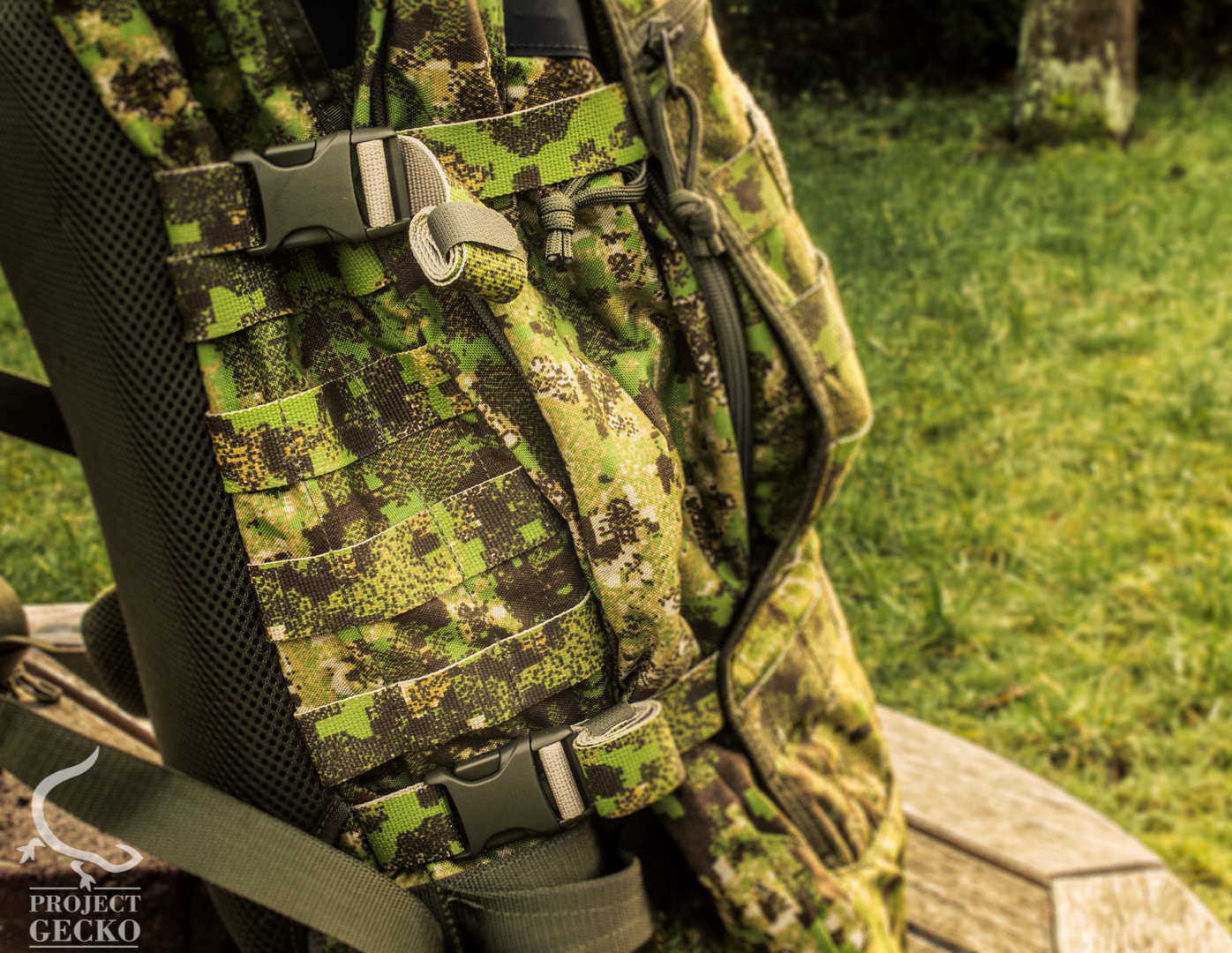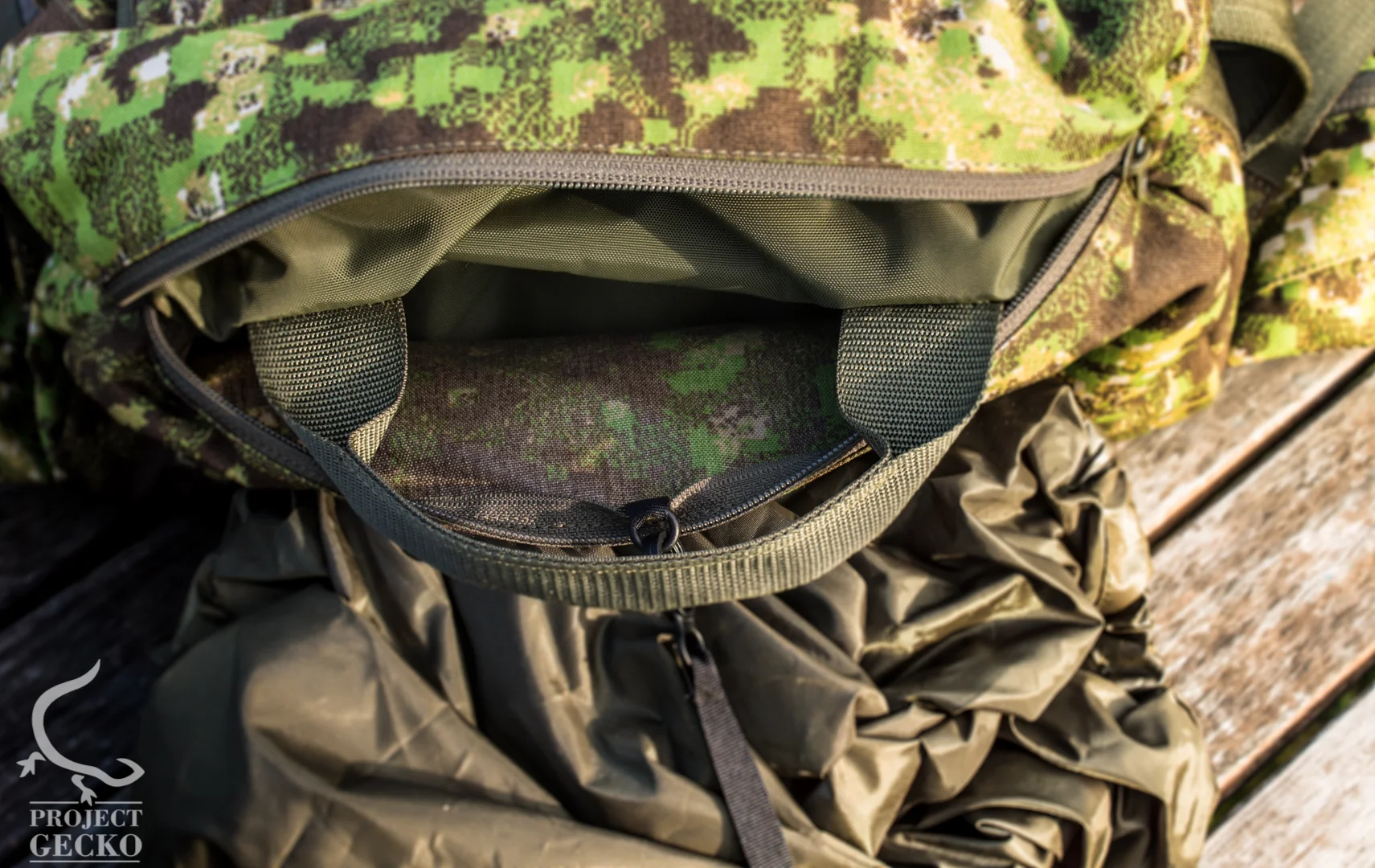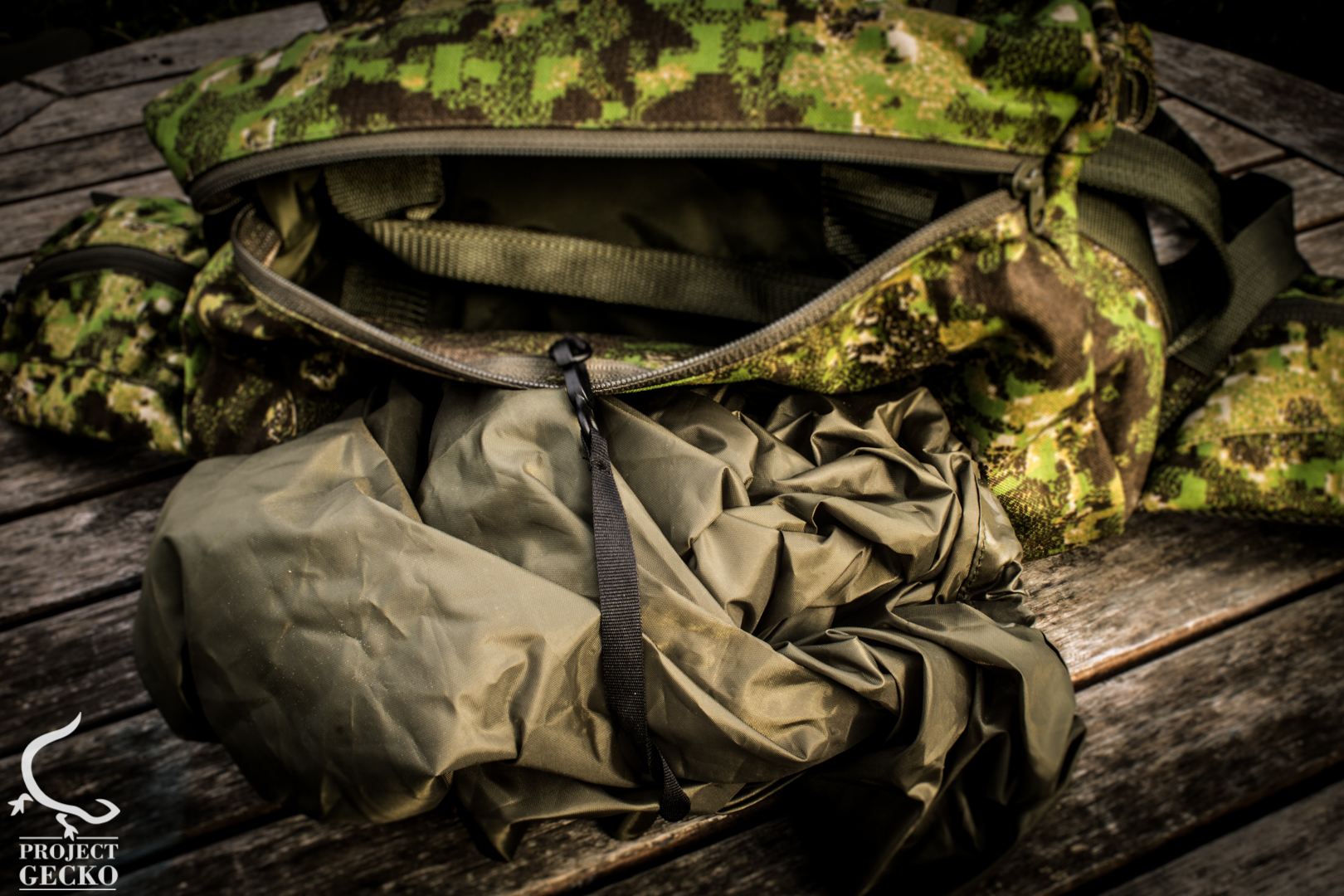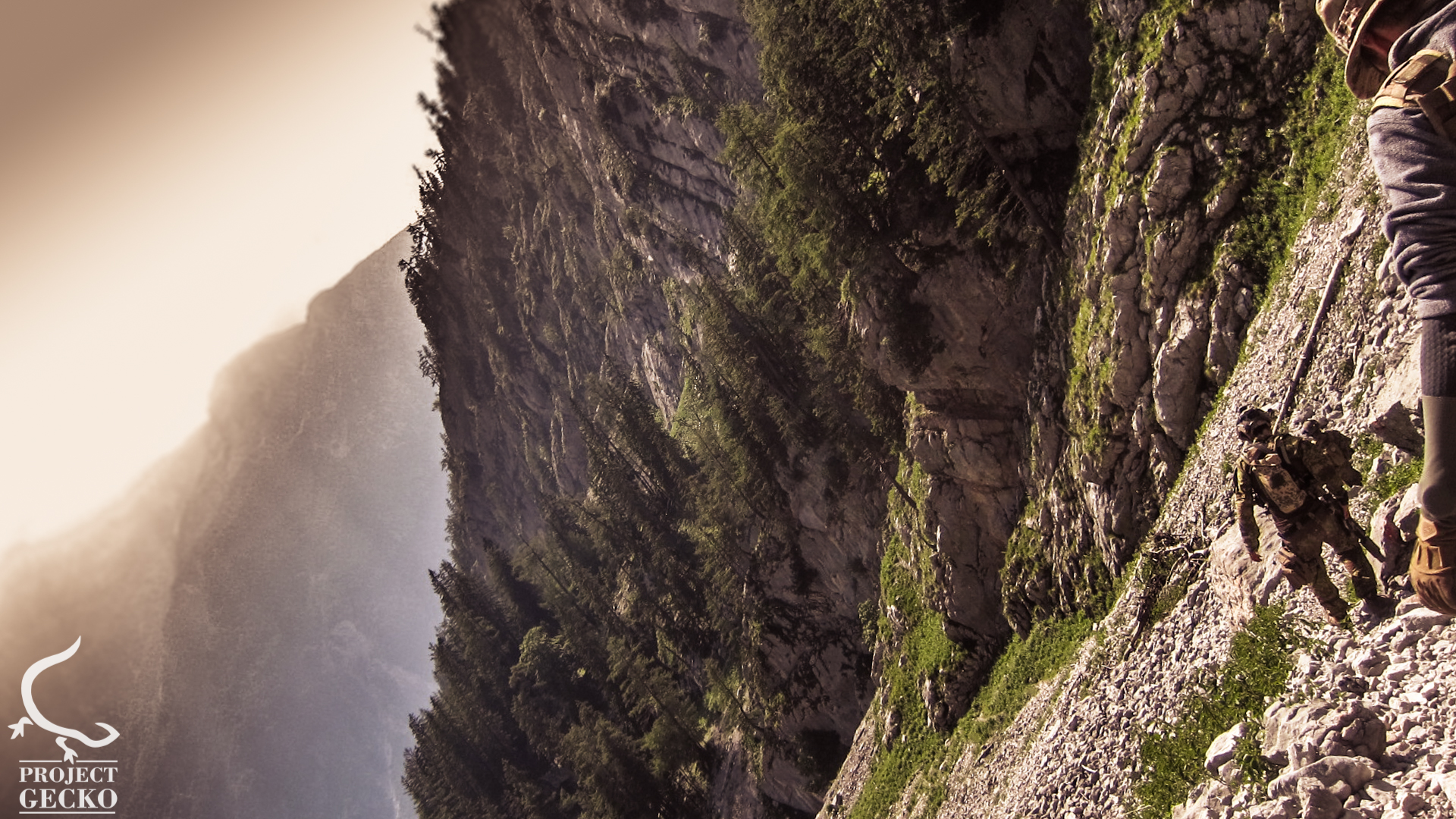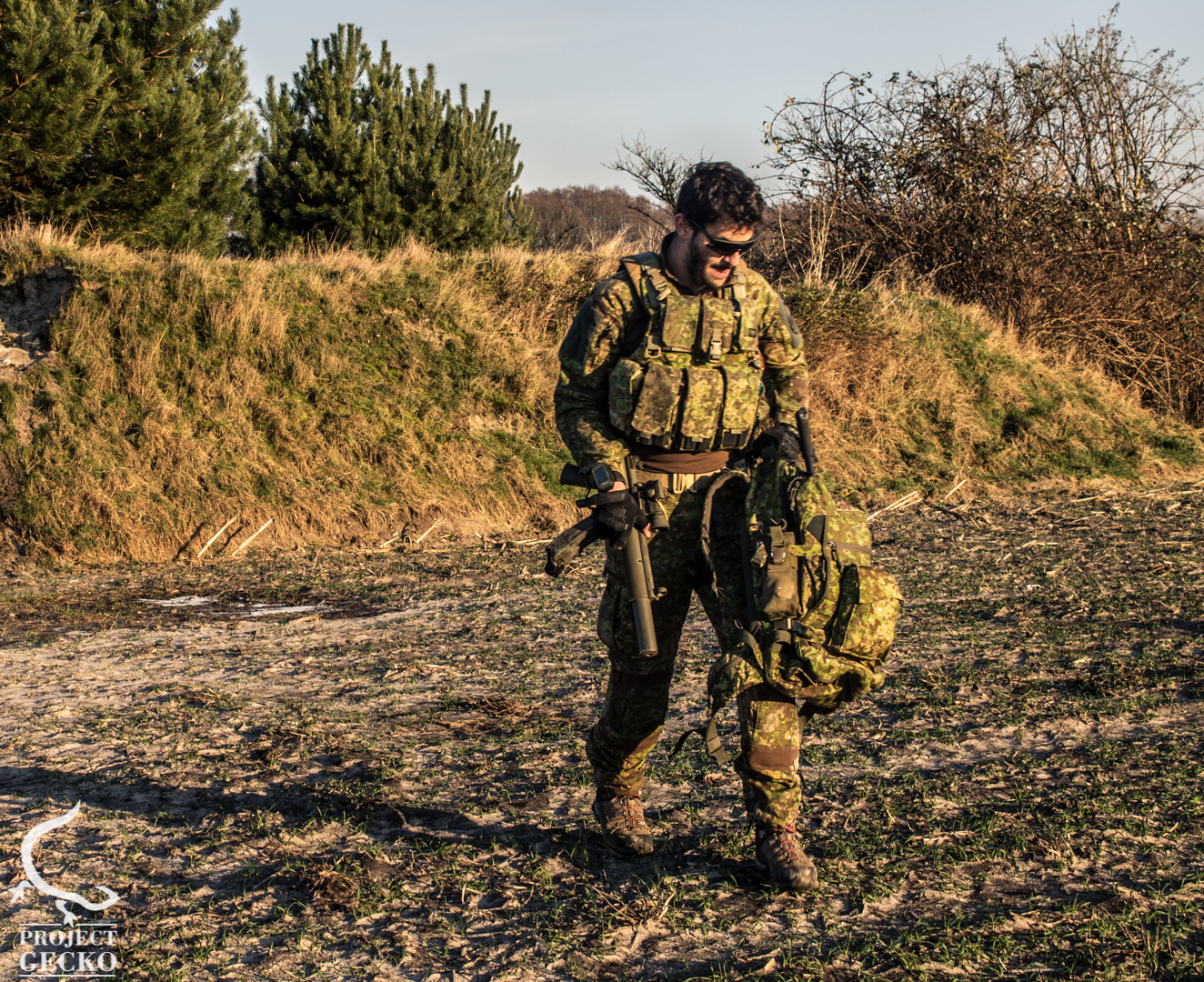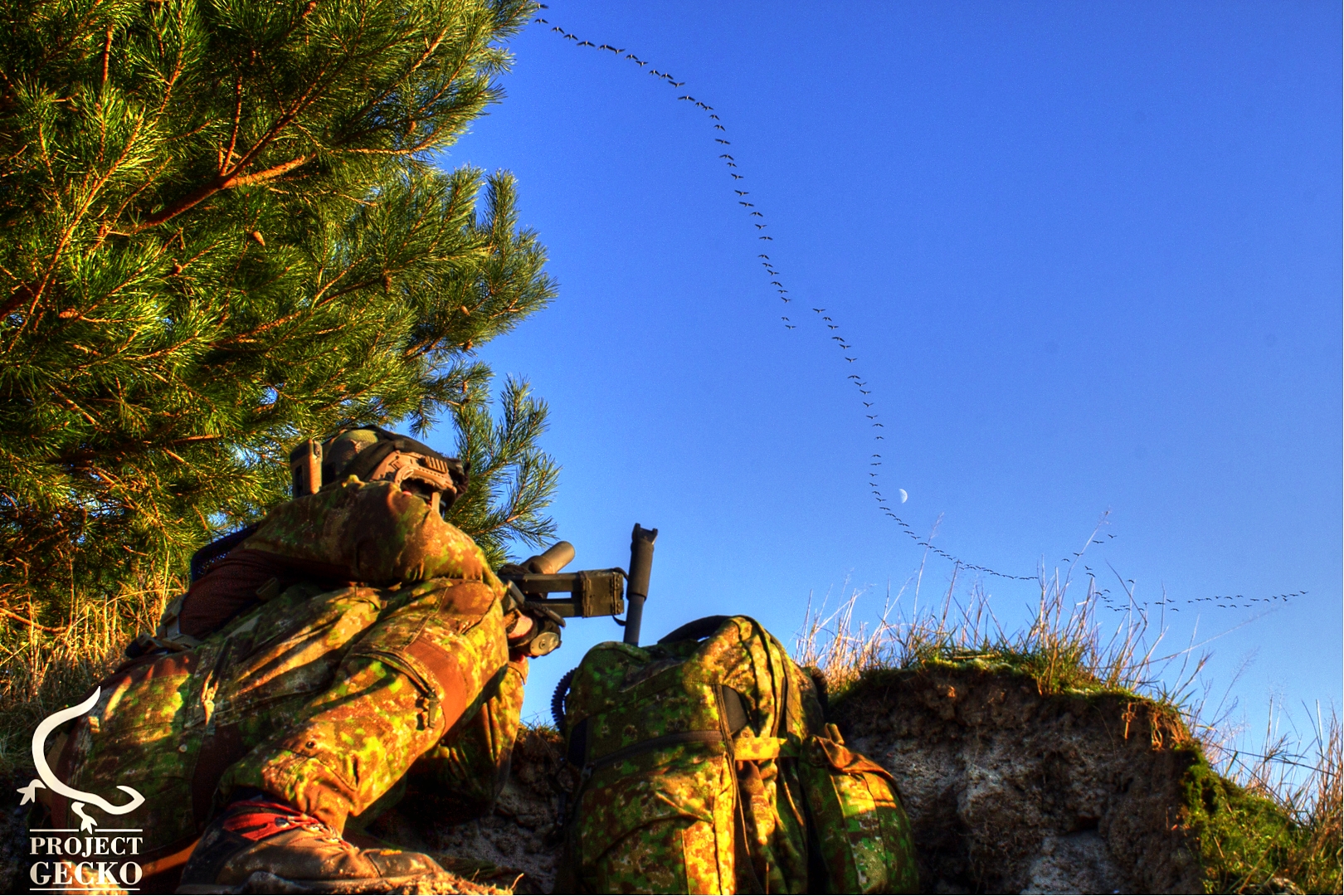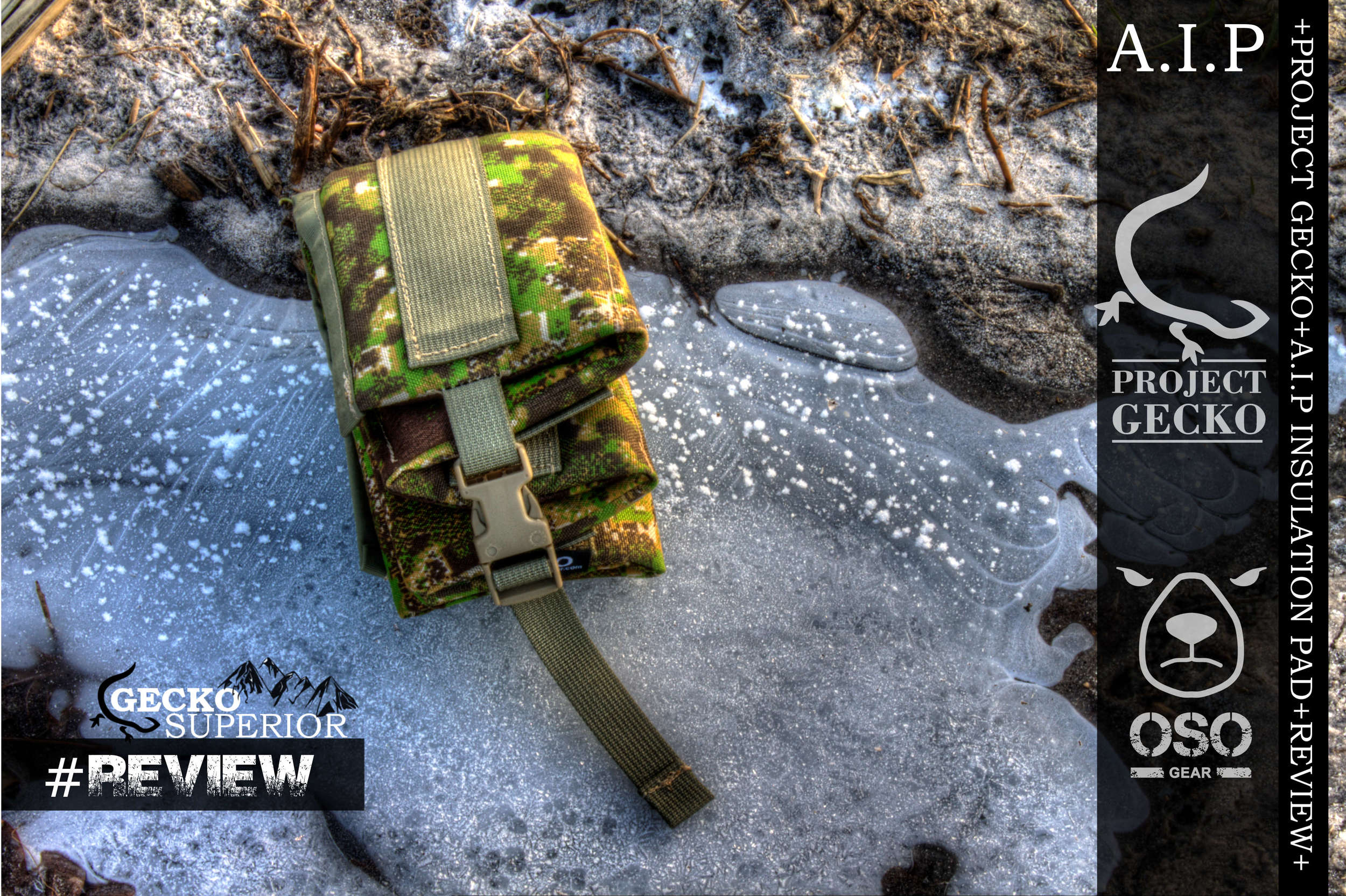Recently during one of PG shooting courses, I have heard several students arguing about whether a tactic or a shooting stance, should be 100% universal or on the other hand a purpose designated......
Viewing entries tagged
project

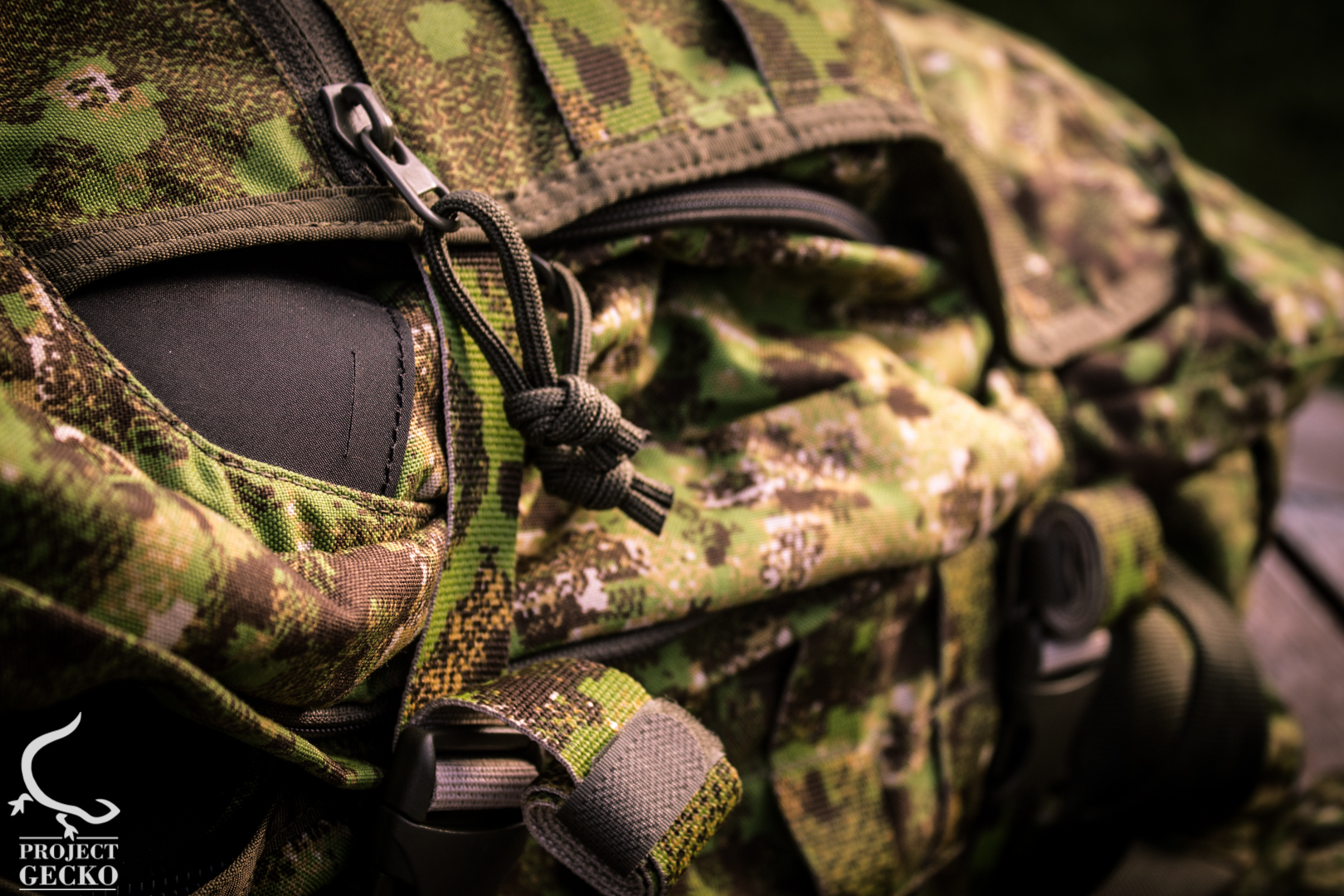
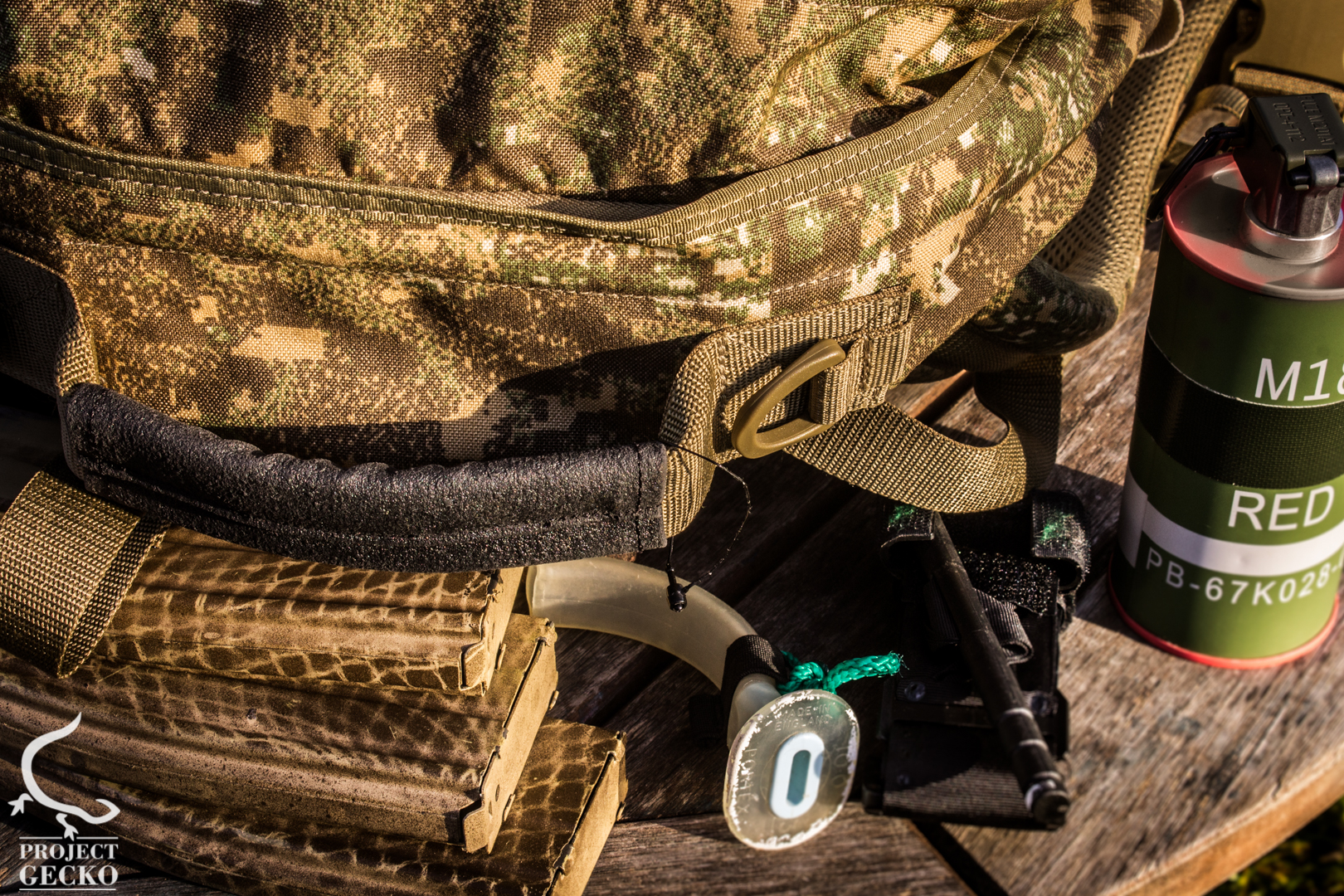
Welcome to our 2nd part in the on going review series of the Tasmanian Tiger Mission bag in Pencott camo application. This review is brought to you by Project Gecko in full cooperation with TacticalTrim & Tasmanian Tiger. The review will focus mostly on the carrying capability & internal design of the TT mission bag.
Enjoy reading !
Compartments & partitions
Internal
Let´s continue where we stopped, the internal compartments.
The internal compartments are nothing less than outstanding. Great craftsmanship and sewing work. TT also did a great job by utilizing empty space into an efficient space. Let's check it out.
The main compartment
Measures : external - 55 x 30 x 15 inch.
“Well played Tasmanian tiger.” That was the first sentence after I inspected both main and Secondary compartments
Well the main compartment is pretty much the core and center of the backpack. While designated for the heavy stuff, this compartment contains 2 partitions. Both offer a wide storage capability and most simple access. At the top of the compartment there’s a vertical Velcro loop which allows the user to secure specific items (antennas, tubes, wires, etc).
Packing a backpack requires experience and practice, seriously. Without getting too much into the idea of how to pack up and divide the weight in the right way so you could avoid pain and sustain longer the weight, it is highly important to concentrate all of the heavy weight items at the center of the backpack, close as possible to the back system.
Since most heavy objects are also big (PRC's, optic devices, ammo packs, etc) it would make more sense to design the main compartment big and “free” as possible.
Main partition
A simple partition with an elastic band on the top. Ideal for maps, documents, notebooks and other thin materials. Thanks to the elastic band on the top – it is easier than ever to prevent your items from mixing up with other pieces of equipment.
Secondary partition
Traditional compartment which is closed by a zipper. This compartment has no specific designation, but I would recommend to use it as a storage for MRE's \ Food packs or secondary hydration bag. On the other hand I would really recommend to pack it up with Medium - heavy weight items rather than the lightest.
Second compartment
Measures: external 55 x 30 x 15 cm
As mentioned above, the heavy – the bigger. So after we stored all of the heavy stuff in the center aka the main compartment of the backpack – what's up with the secondary? Do not underestimate the word secondary. While the secondary compartment might sound less important, it´s holding a great storage capability and most import – efficiency.
The secondary compartment contains 3 open partitions. While only one of those has an elastic band closing the partition, those partitions deliver a great efficiency towards an organized storage and most medium sized equipment (even bigger).
The secondary compartment contains 4 (!) access ports. Those ports have an elliptical shape and allow the passage of antennas, hydration tubes, CO2 tubes or any other power cables for optic devices. While the 2 ports on the top are nothing rare in today packs, the lower ones are, at least in my eyes.
And I love it. It gives the end user a more flexible decision towards “designing” his storage, and how he wants to utilize it. Those ports are also great for CO2 tubes or extended battery cables which are often used for advance optic equipment. With that being said, it is great to see such a level of detail.
On the top of the secondary compartment there is a horizontal Velcro loop, which could be a great assistance towards securing \ organizing antennas and tubers.
Nett partition
The advantage – visibility
Thanks for the mesh fabric where the end user can see into this compartment. With this being said, it offers a great advantage towards stressful situations, where you need to find something fast. This partition is closed by a horizontal zipper.
I would recommend to store anything that has to do with the word medical. From secondary Tqs to trauma kits or IV's. Why? Because under low-light or stressful conditions it would be :
1. Easier to recognize the pocket by touch (mesh material)
2.Visibility (Mesh fabric)
3.Easy to access (even with gloves)
External compartment
Design.
In terms of design the external compartment is quite different from the common “tactical” backpacks you would see on the market. The external compartment also offers a strategically placed for MOLLE pouches.
Compartments \ Loading capability
The External compartment is actually divided into two sub compartments. While the only thing that separates between those pouches is an mesh fabric, those pouches offer an efficient access and easy locating under stress or darkness.
The external compartments are originally designed for hydration bags and other stuff which should be in immediate reach. I personally find it really comfortable for storing small items such as thermal shirts, maps, food or IFAKs (assuming its ain´t on you)
Adjustment
One of the interesting aspects in backpacks that most people, including soldiers, tend to forget is, how many things change in your backpack integrity once you speed up. The design ability, to actually give you the chance to properly adjust and set limits to your backpack fabric, is important.
The external part resembles a flap which deploys 4 straps on each side for a maximum adjustment. Ideal when you want to prevent that “wobbling” feeling when running with a heavy payload, and some heavy MOLLE pouches in addition to that weight. It felt pretty much like an advantage soon as I filled up the backpack. Stuff was secured and tight – no bouncing, no noise, all tight and in its place.
Access
While this might be already obvious in the pictures – a wide, comfortable access is something valuable. Especially during the winter when we use gloves. The access in the sub compartment goes both ways and is sealed with zippers. Simple, easy...and effective
Rain cover \ Bottom compartment.
Ok, this is where I was really thrilled. The mission bag does contain a rain cover which is secured with clips. While a rain cover is nothing special, and its existence with backpacks was here before men stepped on the moon – the excitement came from one reason – detail.
The quality is high, comfortable and also very solid....but most important – light. What really got me was, that instead of adding the rain cover, like most backpacks, inside the backpack , TT found a way to locate that rain cover WITHOUT compromising over storage space or access. The location is basically outside of the backpack and on its bottom. While this advantage is clear, it does not stop here. The train of advantages continues to the next point – using the rain cover.
While your first reaction to this would be like “I knew that already!” most people simply don´t know how to use their rain cover properly, in fact I see that all the time. Once the rain starts, people take out their rain covers and are trying to pack the backpack from above – which results in that funny cover slipping away. Add military utilities such as antennas, tripods etc – and its a pain in the ass. This relocation of the pouch in the bottom basically forces in some kind of a way the user to strap his cover on his mission bag from below to the top (like it has to be). In my opinion this is just comfortable location, period.The size of the rain cover is also decent. Pretty big, and able to deal with external MOLLE pouches, tripods and antennas.
Next part of this review will focus on the Back system of the mission bag.
Eliran Feildboy
CEO & FOUNDER PROJECT GECKO
WWW.PROJECTGECKO.INFO
WWW.GECKOSUPERIOR.COM
Prologue
If there is one type of equipment I consider "challenging" enough to review – it is a backpack.
Choosing a backpack is like choosing a boot or a running shoe. It MUST be comfortable and breath taking from the very first moment you use it. I am a big fan of backpacks...in all shapes and capacities.In this review I am going to do an evaluation of the Tasmanian Tiger mission bag, a 37 cubic inch backpack. It is also important to remark that Tasmanian tiger expected to release up to 15 products with Pencott camo application.
Choosing the right backpack for your mission or activity depends initially on the type of activity or perhaps a mission. With most backpacks having a capacity range of 25-L to 100-L, it is important to understand what you need from the backpack, and how it should fit into your activity. Or let's rather say, how should my backpack increase my efficiency and effectiveness in the field?
But hold on a second - What makes a backpack a good backpack?
THE KEY FEATURES
1.Durability
First and most important – durability. Having already a ripped shoulder strap or a broken zipper after a 72 Hours SR sucks. Not only that it sucks, it harbors a dangerous option of losing equipment, and leaving traces in the field - something a professional can not allow to happen, especially not during a SR. Rather than the operational aspects, it simply renders the component "out of use".
2.Comfort & back system
This part is as crucial as wearing the right boots size. Choosing a backpack without a good back support or air ventilation is a sin. (Ventilation is less crucial to those who wear Armor \ Plates etc) A proper back system will not only give you a comfortable feeling while carrying heavy payloads, but it will also ensure a healthy, long lasting back. Yep, simple as that. If you go out into a mission, with a backpack that is not supportive enough for your back, you will gain pains in areas such as the neck, shoulders & lower back pretty quickly...that pain during a mission will reduce your effectiveness and concentration.
2.Capacity VS efficiency
It takes two hands to make a backpack. It takes two hands, experience, mindset and wisdom to create an efficient backpack. With that being said it is important to check if your backpack in fact is efficient. Ask yourself a simple question: "Does the compartment layout makes sense ?" or "How can I use it efficiently instead of just throwing stuff inside?" And so on.
Now that we understand these important three most important features, or lets call them "key" features, we can dive into the Tasmanian Tiger mission bag, and figure out how that bag has an advantage over other products.
Quality, Craftsmanship & Thought
A lot of thought and experience was embedded into this product. I currently have the 8th Generation of the Mission bag. Which means much was improved and changed over time. The craftsmanship of this product is beyond top notch, it is bordering art. After 10 minutes of looking through the features, putting stuff in & out the bag – I can testify and ensure you that someone put a lot of research and exemplary work into this bag.
Handles.
One of the nice features which I personally really missed in my own military service are those handles. The mission bag includes 4 handles. The main handle on the top, which is covered by a soft,PVC- like material, is one of those casual handles you´d come across in any modern design. Two others are something less common and located on the left & right bottom of the bag (just behind the waist straps).
Main carrying handle
Center- Lower part of the backpack
Side handle. Located on the lower side of the backpack on both sides.
The 4th handle is located inside the lower compartment, which is exactly in the center of the bag basis.(This compartment is also used as a storage point for the rain cover).
The use of the main handle on the top of the bag is pretty clear – so let's focus on the three others.
Those handles allow a comfortable handling of the backpack .The lower handles, located on the lower sides of the bag, allow the individual an easy access in cramped environments where every centimeter counts. I´m referring of course to vehicles, helicopters and APCs. Instead of pulling some “unidentified” part of your backpack – you got something to hold on to.
A combination of the handles on the top and bottom can also become very efficient if you need help from a friend to carry the backpack between vehicles, or short distances.
“‘’When you hiking over 80km to your target,carry a total of over 50% body weight because all of the utility you need -There most be some level of trust in the equipment you use. In the field, the backpack is your kitchen,logistic warehouse and the only property you could proudly call ‘home’.’’ - Eli.”
Access.
The TT mission bag has a pretty awesome design which results in a very simple yet incredible access to its compartments.
While in most traditional tactical backpacks (I´m referring to 25 – 45 cubic inch , commonly known as 3-day packs or assault pack) the external access is pretty much the same, the internal part is actually where the true creativity and perfection lays. Unlike other backpacks, it looks like TT really spent time and thinking, on how to utilize to the maximum of the space in this mission bag, and how to divide it in a way which will guarantee a “freedom of access” and less limitations, which connects with the next point.
Upcoming Tasmanian tiger products in Pencott GreenZone & Badlands:
Interested in a detailed evaluation \ review of your product ? contact us via : contact.project.gecko@gmail.com
Next part of the review will focus more into the carrying capability & internal design of the TT mission bag.
Thank you for reading guys,don't forget to share...see in part 2 !
Eliran Feildboy
CEO & FOUNDER PROJECT GECKO
WWW.PROJECTGECKO.INFO
Prologue.
In this review I´m going to give you a quick detailed look into the ''AIP'' – the Ambush insulated pad.
The project was originally made by OSO Gear and field tested by Project Gecko. After half a year in field activities and different weather conditions we decided to move to the next phase and to introduce it officially. The review itself will focus on 3 topics:
The importance
Specs and small details
Efficiency vs Effectiveness
While it may be used for many activities rather than ''Ambush'', we took the word ambush from the IDF slang for those kind of mattresses \pads.
So lets go.
The Importance.
The most common insulated pad you will see on the market is the sleeping pad. While the only differences between the 'AIP' & sleeping pads are width & length, both are mostly expected to insulate your body from the cold. Any kind of camping pad would be expected to be both cushioning & insulating – the crucial part is its ability to insulate your body from the cold.
But wait a second, why should I use an insulation pad anyway?
1.Hypothermia
Hypothermia is the main reason rather than comfort. Hypothermia occurs when the body can no longer produce more heat than it is losing. That precious heat that we require for normal metabolism and body functions. Out of my military experience, Hypothermia is something that could hit anyone at any level of professionalism and requires awareness.
2. Bugs \ Insects
Some places on our green planets are remarkably beautiful. Within this beauty there exists a wide range of wild life – insects. It doesn´t matter if you are military or civilian, it really sucks to sit down for few hours in a specific place feeling the entire ecological system of your area climbing up into your ass. While good clothes are also a factor, a good comfortable pad may decrease the amount of bugs finding there to you.
3. Wet
Ok, let me start with this. – This pad is not 100% water resistant. With that being said, if you like to sit outside in the rain and count rain drops, then maybe it´s not for you. The AIP will be useful when you want to sit on wet surfaces. Such as wet moss (on stones for example) or even snow.
Specs and small details.
- Dimensions: 39 x 34 cm
- Camouflage print: GreenZone by Pencott
- Material: Cordura 1000D
- Insulation material GalFoam
- Weight: 230 gramm
The design of the AIP could easily bring up associations with chocolate bars. The guys at OSO divided the surface of the AIP into 8 different cells. The idea comes from foam insulation, which is commonly used in walls or roofs for example. Without going into to much confusing information – dividing the insulation into 8 different cells gives each cell self-sufficiency in insulation and comfort ability. Further more, the cells design gives the AIP a great flexibility within the different elevation it might be used upon.
The insulation material
GalFoam is a substance produced in rolls using injection technology. GalFoam is particularly suitable for acoustic and thermal insulation in the construction, air conditioning, sports, camping and other markets. The use of Palziv’s raw materials is extending the capabilities and basic features of various products, providing such benefits as ultra-high density, anti-static, conductive, elastic, flame retardants, durability and UV and more.
The GalFoam capabilities
Durability
Resistance to harsh climatic conditions
Resistance to chemicals and fluids
Shock absorption
Light weight
Convenience and ease of processing
Efficiency VS Effectiveness
Like in most products it´s a thin line. While efficiency would focus on stuff like packing capability & storage requirement (in your backpack for example), effectiveness would focus on the product capability to be really useful rather than looking good.
Efficiency
The AIP is relative compact. Thanks to the designs the pad is pretty flexible upon storage. Aside of the compact storage capability, the AIP has a really light weight (230 gramm), so the it could be a great solution for users with limited weight carry. All in all the AIP delivers a compact efficiency under a decent weight.
Effectiveness
Simple to use, quick to deploy or store – the AIP does not consume time and gets straight to work. While inflatable pads requires some time and noise (!)– the AIP is ready to go. Another factor is the reflection \ shine. Since it´s covered by 1000D Cordura, it does not reflects light or shines. The AIP is also more than just a seat. I used it personally as a support surface for a barrel of a sniper rifle, or a working sheet for tools, etc. However, the options are various, and the result is one – effectiveness. The ''Cells'' design (mentioned above) allows the AIP to obtain different angles of use, perfect for different terrain elevations.
Another pretty effective characteristic, which OSO implanted in his AIP, is the finnish and cover of edges & bottom. The guys at OSO picked up the spots which potentially could decrease significantly its life span over excessive used. The bottom of the pad (as you can see in the picture below) got 4 lines of strong webbing which should receive most of the pressure and rubbing.
Summary
The AIP is an insulation pad which gives the end user the ability to sustain nature temperatures in most climates. Aside of the insulation capability it provides comfort ability and efficiency towards packing, organizing etc.
The AIP insulation pad Available at : http://tinyurl.com/pv532y3
Thank you for reading.
Eli
-Project Gecko-





















